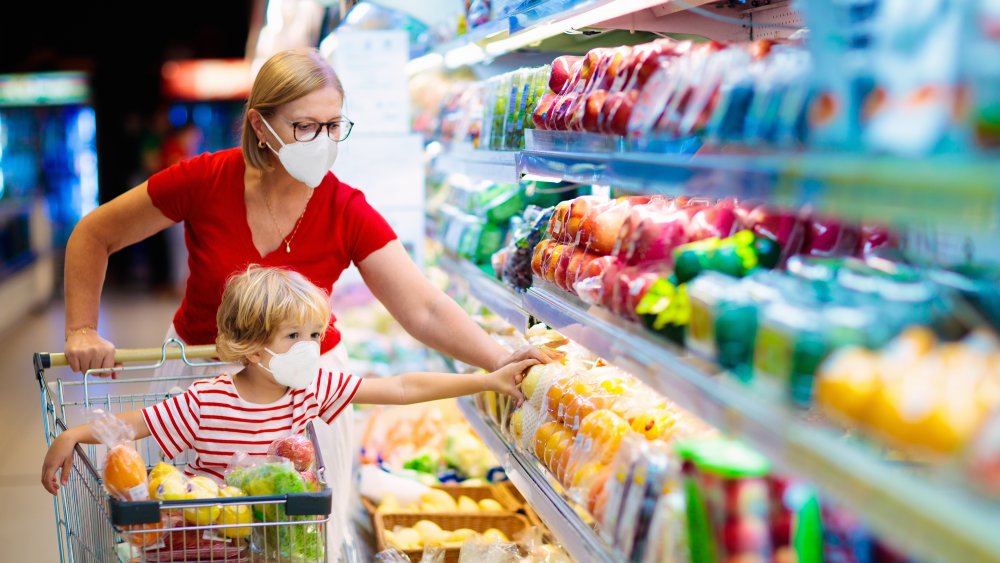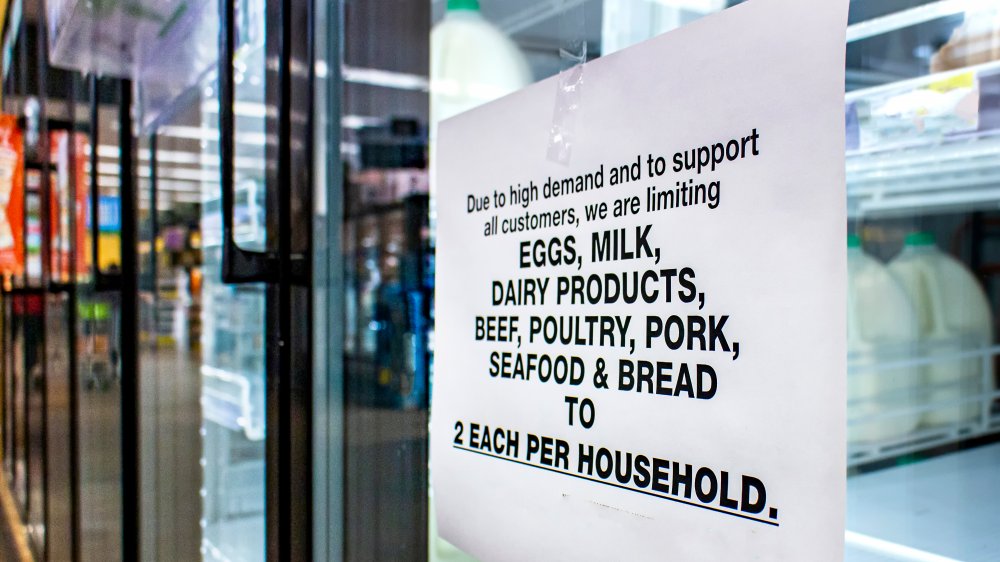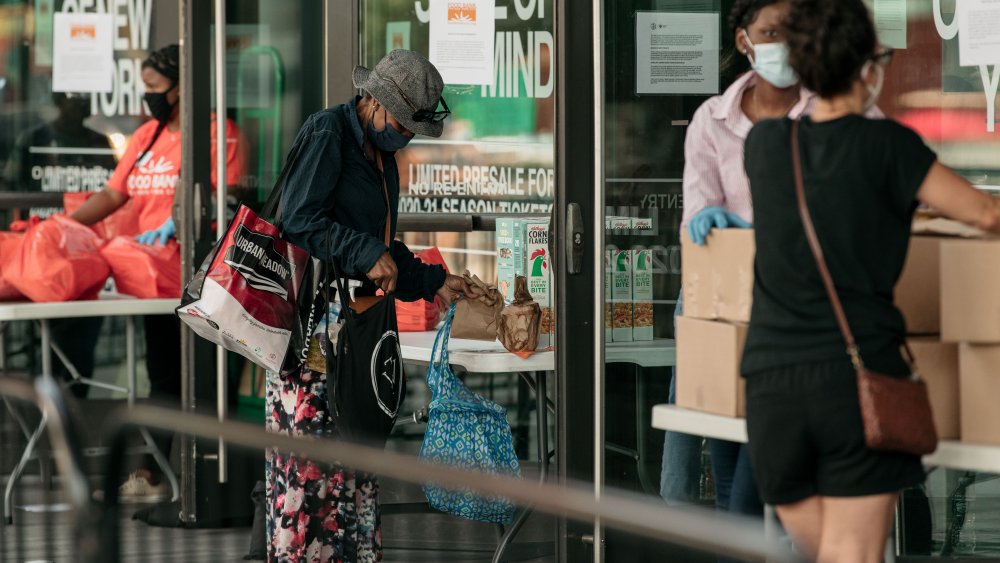The Real Reason Grocery Prices Are Rising At An Alarming Rate
This year will be remembered for many things. This is the year food supply was high, and the harvests should have been plentiful (via The New York Times). But it is also the year millions of pounds of fresh food was destroyed while prices for essentials like meat and dairy rose to new highs and supermarkets struggled with supply chain pressures.
CNN points to statistics from the Bureau of Economic Analysis: Between the period of February to June, meat and poultry prices spiked nearly 11 percent, beef and veal's prices skyrocketed 20 percent, while pork prices climbed by 8.5 percent, which is "modest" by these standards. American shoppers also paid 10 percent more for their eggs, and 4 percent more for their cereals and fresh vegetables. When compared to this same period last year, beef and veal prices are 25.1 percent higher, eggs are 12.1 percent more expensive, and pork is 11.8 percent more costly, per The Washington Post, which says we saw prices spike in this dramatic manner because supply chains were hamstrung by the coronavirus pandemic, even as customers were rushing to hoard supplies.
Food supply chains were not able to adapt to the pandemic
The sudden hikes in food prices have taught both suppliers and consumers on either side of the food chain a very important lesson: The food distributions systems we have in place today cannot work around the erratic demands of an unpredictable event like a pandemic.
"These supply chains are not as fungible as people think. You have a farmer who has a relationship with a supplier that has a relationship with a restaurant, and when those restaurants decide not to open, it's really practical things like, 'Who do I call?' I don't have those contacts and relationships," Purdue University's head of the department of agricultural economics Jayson Lusk tells The Washington Post. "The supply was not able to move to where the demand was, and that's a big part of why you saw prices getting pulled up."
For instance, while shoppers were looking to buy milk, producers were struggling with a surplus of small paper milk cartons that were originally meant to go to schools which by then were closed because of the pandemic.
Our food supply chains aren't back to normal
We may be six months into the pandemic, but things aren't back to normal. Meat processing plants have had to close because workers were getting sick, and they have had to cut back on production to account for new safety procedures (via CNN). The egg supply chain is also trying to change its course, because there aren't enough whole eggs for sale. Consider that the eggs we consume in restaurants are often sold and delivered in powdered or liquid form.
But until the supply chain fixes itself, we'll all have to live with higher prices, even those among us who have lost their jobs because of the pandemic. As a result, we are seeing a new problem take root, that of food insecurity, with food intake disrupted over the lack of money and resources (via Office of Disease Prevention and Health Promotion). According to The Washington Post, 1 in 6 adults was food insecure as of May, and that doesn't even account for the children affected by this situation.


